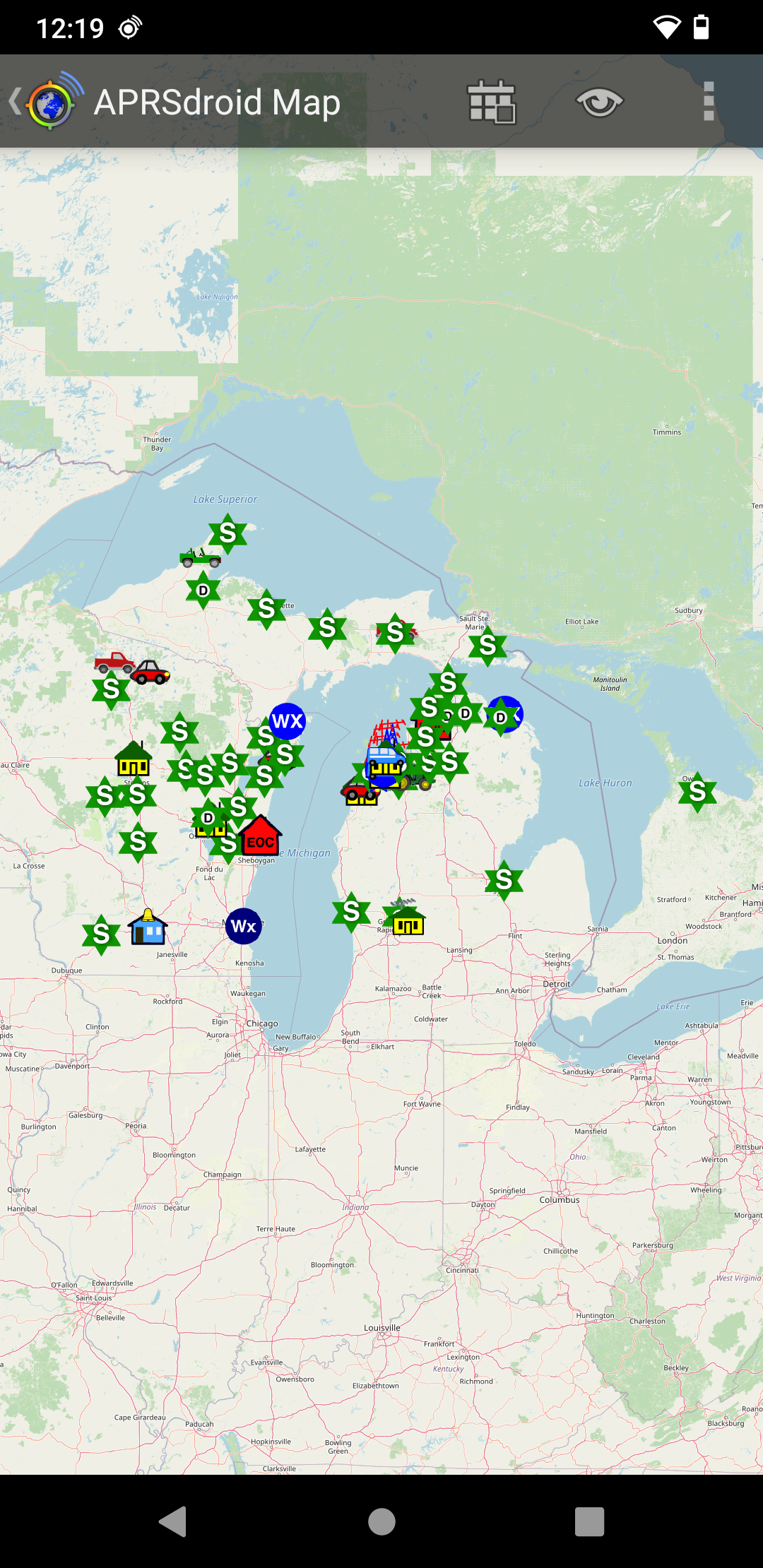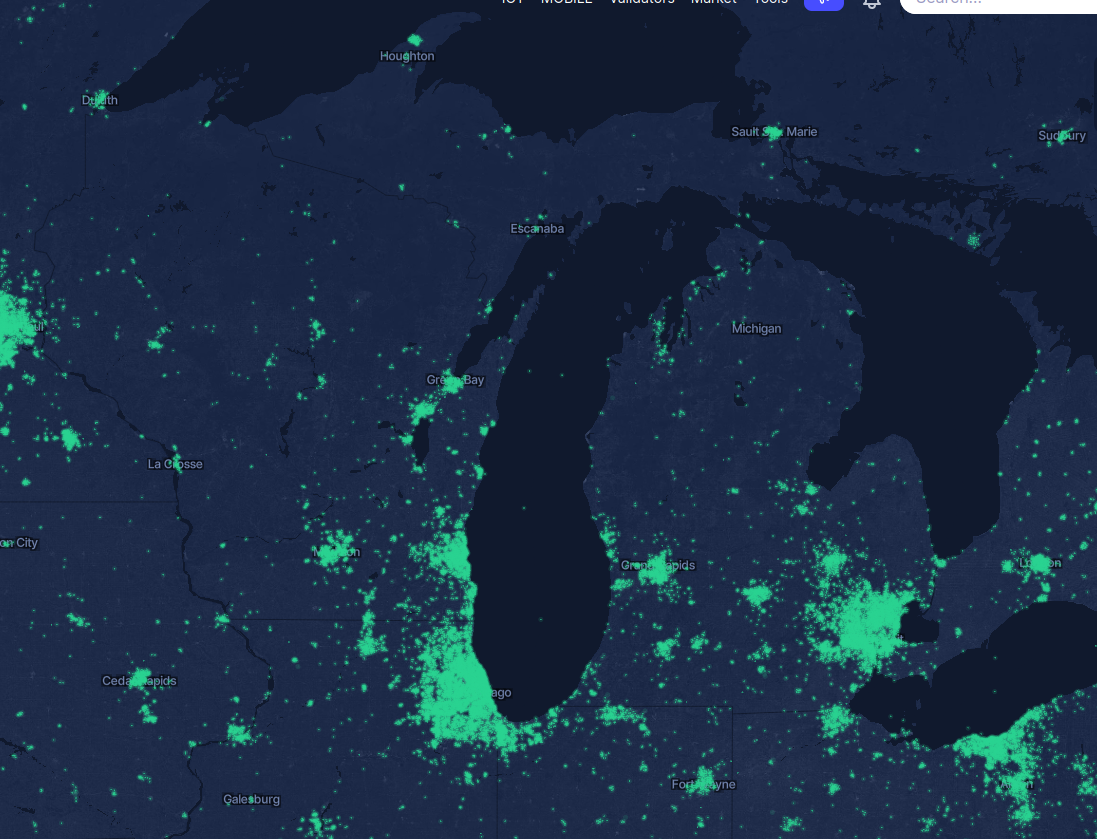A lot of prepper types are interested in emergency communications that don't use the Internet, and with good reason.
It's totally conceivable that our fragile IP-based infrastructure may go down for an extended period of time, or worse, be inaccessible to certain individuals due to wrongthink.

If either of these contingencies are inconceivable to you, this blog probably isn't your cup of tea, anyways.
Meshtastic, a mesh network standard operating on LoRa, is a popular choice for "grid down" data comms.
Meshtastic has a lot going for it: LoRa is an unlicensed band (915MHz in the USA) which gives it a low barrier to entry. It offers encrypted texting and location data by default, it's open source, and the hardware to run it is very cheap at around $40 USD for a single module.
Another popular standard is APRS, or the Automatic Packet Reporting System. You can tell how long APRS has been around by virtue of its website design - it's been kicking since the 80s, making it a pre-Internet protocol! Despite its age, APRS is highly flexible, offering messaging, location data, bulletins, even weather data.
Like LoRa, APRS is very cheap to get into - all it requires is a $20 Baofeng radio and an old Android phone.
Its chief drawback in the eyes of many is its requirement for licensure: Operating on frequency 144.39MHz in North America, most of the APRS network requries an amateur license to transmit on. And because APRS operates on a licensed amateur frequency, that means encryption isn't "allowed" by the FCC and similar government agencies (more on that later).
Since both LoRa and APRS on VHF are line-of-sight relay networks, the two are highly comparable for a would-be off-gridder looking to communicate without traditional data infrastructure.
However, despite the drawbacks APRS may have to Meshtastic in theory, this author will tell you unequivocally: APRS is a much more useful network IRL than Meshtastic and probably will be for the foreseeable future.
The Network Effect
As noted earlier, APRS has been around since the 80s. This means that people have been running and maintaining nodes in the APRS network for three decades. So it goes without saying that APRS has a much larger network effect than Meshtastic. There's just way more (and higher power) APRS nodes in operation than Meshtastic.
As a user, this means that it's far more likely APRS will be available in your area than Meshtastic or other LoRa-based services, especially if you're outside of an urban environment.
To demonstrate this, I've used both protocols in a rural area of the Midwestern United States to show what each is capable of, and tl;dr, the sheer size and transmit distance of the APRS network blows LoRa out of the water in a real-world use case.
The Test
For this test, I used as simple a setup as possible for both networks: My APRS configuration used a Yaesu FT-65 connected to an Android phone running APRSDroid.
For LoRa, admittedly, I did not use Meshtastic, because there are no Meshtastic nodes or repeaters within 30 miles of me and I wanted this test to be as fair as possible. I opted instead to use the Helium Network, a monetized LoRa network that does have nodes in my area. As Helium is arguably the largest network of LoRa nodes in existence, I'm doing the technology a favor here by choosing the more populated network.
It still couldn't keep up.
Here is an image of my simple APRS setup listening to regional nodes over the course of an afternoon:

Those packets span two States and even extend into Canada.
I wish I had a corresponding LoRa example for you, but the sad reality is that even with an 8dBi Yagi antenna on top of my roof, I could not find a single peer in the Helium mesh network. This is not for lack of trying, as the Helium network in my area has a similar footprint to APRS:
 Helium Map
Helium Map
 APRS Map
APRS Map
From a real-world perspective, what does this mean for our two off-grid data contenders?
It means that, on APRS, I can send a text message from Central Wisconsin all the way to Ontario, Canada with relative ease. With LoRa implementations like Meshtastic, I'd be lucky to get across the County if I'm rural. Urbanites will probably have better luck, but only within city limits - given that LoRa is predominantly configured for the Internet of Things slave grid, expecting greater distances is probably wishful thinking.
APRS is the clear winner here in terms of distance and reliability for data comms.
Fans of Meshtastic and LoRa will doubtlessly tell me this test isn't fair - that APRS node operators, being licensed radio amateurs, can run very high-power setups at greater elevations than LoRa is capable of. Which is true. The 144MHz VHF spectrum also has better propagation characteristics than 915MHz in terms of line-of-sight frequencies.
However, those same licensed amateurs can also run high-power LoRa installations, but almost none of them do. That's the Network Effect at work again. I'd love to see Meshtastic and LoRa succeed - Meshtastic has significant benefits over standard APRS digipeaters, not least of all being legal encryption and license-free use.
But if your sole consideration is a network that works RIGHT NOW, not in some hypothetical future, this is no contest.
Licensing and Encryption
Encryption is technically illegal on amateur radio, which includes the popular 144.39MHz APRS channel. It's also illegal to transmit on amateur radio frequencies without a license (license-free listening is fine, though).
By contrast, encryption on Meshtastic is 100% legal and doesn't require a license to transmit, which draws a lot of people to it despite the network not being very good at present.
Let me start out by saying that I am a licensed Technician amateur radio operator who also holds a GMRS license. So please don't interpret the following as me running afoul of the FCC's rules and regs personally.
I will, however, say this:
These rules are really, really stupid. People break them all the time.
We live in a world where global communications are at our fingertips 24/7 and most IP-based protocols are encrypted by default. By contrast, amateur radio rules were drafted in an era where regulators were concerned about passing nuclear codes to the Soviets over HF. Obviously things have changed since the 1960s, but regulations have not.
The fact that amateur radio has not kept up in this respect is a holdover from a bygone era. As more amateur radio operators become "Silent Keys" (aka worm food) and young people fail to get properly loicensed, the old guard's gatekept frequency allocation will eventually be gobbled up by intergovernmental and corporate interests, and anyone using this slice of the radio spectrum will become a pirate in a decade or two.
So why not just be a pirate in advance?
Tons of people are already operating illegal encryption on the VHF/UHF spectrum via digital modes like DMR. You can buy a DMR-enabled handset on Amazon for less than $150 USD. The CB, or Citizen's Band, is even worse (or better, depending on your perspective) when it comes to operating outside of legal RF limits.
There's realistically nothing stopping individuals from sending encrypted messages on APRS without a license aside from some Baby Boomers complaining about it, because the FCC doesn't really take enforcement action on the "citizen" airwaves anymore.
I'm not telling anyone to break the law here. I'm just saying that, if you were so inclined, you'll get away with it.
And that's probably a good thing.